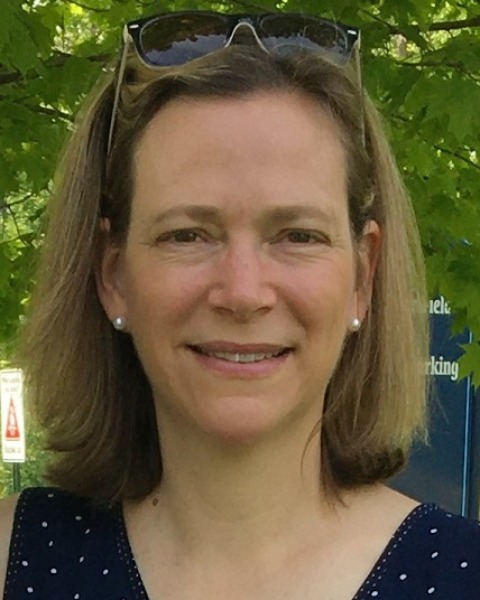Back
Contributed Poster
Poster Type: Contributed Poster
Poster Session:: Agriculture
PS 33-136 - Risks and resources in corn-soybean landscapes for bees
Tuesday, August 16, 2022
5:00 PM – 6:30 PM EDT
Located in: ESA Exhibit Hall

Karen Goodell, PhD
Professor
The Ohio State University
Newark, Ohio, United States
Presenting Author(s)
Background/Question/Methods
Empirical evidence has shown negative effects of agricultural landscapes on the abundance and richness of insect pollinators. Interventions that involve planting field-side habitat and maintaining natural areas within agricultural matrices are popular ways to support pollinators with benefits for pollination services. Because of large foraging ranges of some pollinators and the risks such as pesticide exposure that reach beyond field boundaries, pollinators face risks in agricultural matrices that are not well understood. Major crops in the midwestern USA, corn and soybean, differ in the timing of cultivation and spraying with pesticides and therefore vary in risks and rewards to bees seasonally. I examined bee communities in 13 patches of natural vegetation along an agricultural gradient of corn and soybean production. I netted bees individually and quantified flower abundance five times from May – August 2019. I calculated proportion of corn and soybean planted within a 0.5km radius with the USDA CropScape data layer. I tested for the influence of corn, soy, and their interaction on bee abundance for three periods: spring (corn planting season), summer (soybean pesticide sprays, and flowering), and late summer. Crop-specific risks that influenced bees would show as significant interactions.
Results/Conclusions
I collected 1644 bee specimens in 66 sampling events across the 13 sites. Sites ranged from 0 – 47% corn and 0 – 54% soy within 0.5km. Bee abundances per sample period ranged from 4 – 102. The best model to explain bee abundance data included period, % soy, and period x % soy interaction. The significant period by % soybean interaction reflected a negative impact of % soy on summer bee abundance. The % corn did not have an impact on the bee abundances, nor interact with period. Substituting the proportion of corn plus soy into the best fit model did not improve the fit, suggesting that the percent soybean planted had the largest impact on mid-summer bee abundances. Flower abundance had a slight negative impact on bee abundances but adding it to the model resulted in a poorer fit. These preliminary results suggest that the major midwestern USA crops differently impact wild bee communities and that these impacts vary over the growing season. I found the strongest negative impacts on soybean on bee abundance during mid-season when soybean is sprayed with pesticides. This period also overlaps with the peak flowering period of the soybean.
Empirical evidence has shown negative effects of agricultural landscapes on the abundance and richness of insect pollinators. Interventions that involve planting field-side habitat and maintaining natural areas within agricultural matrices are popular ways to support pollinators with benefits for pollination services. Because of large foraging ranges of some pollinators and the risks such as pesticide exposure that reach beyond field boundaries, pollinators face risks in agricultural matrices that are not well understood. Major crops in the midwestern USA, corn and soybean, differ in the timing of cultivation and spraying with pesticides and therefore vary in risks and rewards to bees seasonally. I examined bee communities in 13 patches of natural vegetation along an agricultural gradient of corn and soybean production. I netted bees individually and quantified flower abundance five times from May – August 2019. I calculated proportion of corn and soybean planted within a 0.5km radius with the USDA CropScape data layer. I tested for the influence of corn, soy, and their interaction on bee abundance for three periods: spring (corn planting season), summer (soybean pesticide sprays, and flowering), and late summer. Crop-specific risks that influenced bees would show as significant interactions.
Results/Conclusions
I collected 1644 bee specimens in 66 sampling events across the 13 sites. Sites ranged from 0 – 47% corn and 0 – 54% soy within 0.5km. Bee abundances per sample period ranged from 4 – 102. The best model to explain bee abundance data included period, % soy, and period x % soy interaction. The significant period by % soybean interaction reflected a negative impact of % soy on summer bee abundance. The % corn did not have an impact on the bee abundances, nor interact with period. Substituting the proportion of corn plus soy into the best fit model did not improve the fit, suggesting that the percent soybean planted had the largest impact on mid-summer bee abundances. Flower abundance had a slight negative impact on bee abundances but adding it to the model resulted in a poorer fit. These preliminary results suggest that the major midwestern USA crops differently impact wild bee communities and that these impacts vary over the growing season. I found the strongest negative impacts on soybean on bee abundance during mid-season when soybean is sprayed with pesticides. This period also overlaps with the peak flowering period of the soybean.
